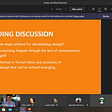What is omnichannel CX? An origin story.
“Airtel strives to provide a great customer experience to its users through a truly omnichannel customer support system.” Yes, THAT sounded like a mouthful already and we hear you. “Customer experience” and “Omnichannel” are the two terms especially misunderstood and misused. Hopefully, you will gather a clear idea about both as you get to the end of this article.
Imagine: It’s Friday night and you’re ordering in. It’s an online start-up with a slick app. On-point search results for your craving, a delightful ‘add to cart’ experience and a simple, fast check-out. The user experience leaves you smiling inside. However, the wrong order gets delivered…an hour later than was promised! You’re angry because you’d planned the evening around this. You raise a complaint but they don’t respond. You never order from them again.
You just had a terrible customer experience.
Customer eXperience (CX) is used to define your resultant interaction with a brand as a paying customer. It spans entire online and offline journeys put together. Digital products and their user experience (Apps, websites) are just a fraction of this. Costly after-sales service of a car, damaged product delivery, drivers refusing your trip request, an uncourteous waiter — are all examples of poor CX.
It IS possible to have a great UX but terrible CX.
Here are the various interventions that could’ve resulted in a better CX that Friday:
· A quality check, double-checking your order before handing it off to the rider.
· Allocating a rider who is well-enabled to reach you on time.
· Acknowledging a complaint immediately when it’s raised (esp. on Friday nights!)
· Salvaging the most out of a terrible situation like the above (maybe an offer?)
A good CX influences customer delight and repeat purchases but takes a ton of discipline to manifest.
Now imagine this: You begrudgingly reach out to the start-up again for a refund, but this time you make sure you call them, use their app chat feature, drop them a mail and even raise hell over Twitter and Instagram. Finally, you find out that they run a brick-and-mortar store and pay them a visit. These are all the ways you could reach out to them. These ways are called ‘channels’.
If a brand is present over all channels — each working discretely, not communicating with each other, they are a multichannel brand. If they communicate to make your interaction with them seamless, regardless of which way you reach them, they become omnichannel. More about this here.
You could have omnichannel sales, marketing or customer support. You could raise an order from an app, but track the order through SMS; receive the order from a human; provide feedback over email or interact with them over social media. We’re interested in the customer support aspect out here. Going forward, we’ll label ‘omnichannel customer support’ as ‘omnichannel experience’.
Omnichannel Customer Experience in the context of Airtel
Now pull back. Imagine again — this time a much larger brand — one that provides telco service to 500+ million customers. Imagine the issues customers must be raising on a daily basis. Imagine what it takes to keep this massive engine running. Yes, it involves tons of tools, processes, people, passion, and a whole lot of complexity.
Airtel employs 5,500 call centre agents (“advisors”) and 9,000 customer relationship officers (“CRO”s) at 13 call centers and 1,100 retail shops across the country.
Each agent and CRO is pivotal in delivering the CX we expect to provide to our customers. And to do that efficiently, we need massive, enterprise-level tools that provide accurate customer data and system statuses for speedy resolution.
The design of the tools and processes they use have a massive impact on how easily they can be trained, their quality of life, and their ability to serve customers. Our advisors perform very difficult jobs where they often bear the brunt of customers and yet put up a polite face and solve problems in a calm manner.
Rubina is one of those advisors. She works in one of the Airtel call centers and typically handles around 55 calls in a day . Her shift lasts for 8 hours in a day with just two 30 min breaks in between. The rest of the 7 hours is just non stop customer interactions in which she has to sometimes deal with irate customers whose cases have been escalated for reasons beyond her control. Her promotion depends on factors like customer repeat rate and average handling time (AHT). She is not even allowed to use her phone while dealing with customers. The only time she gets to use her phone and be in touch with family is during her break. Not an easy job at all, is it?
At Airtel, our goal is to design agent-friendly enterprise tools that take care of at least one aspect of their job which is to provide speedy customer resolutions. This in turn will help them in achieving their targets and full-fill professional aspirations. They are the “users” of the systems we discuss going forward.
In the subsequent articles, we dive deep into these tools and processes — why a truly omnichannel stitch is so complex and how we went about designing at Airtel.








